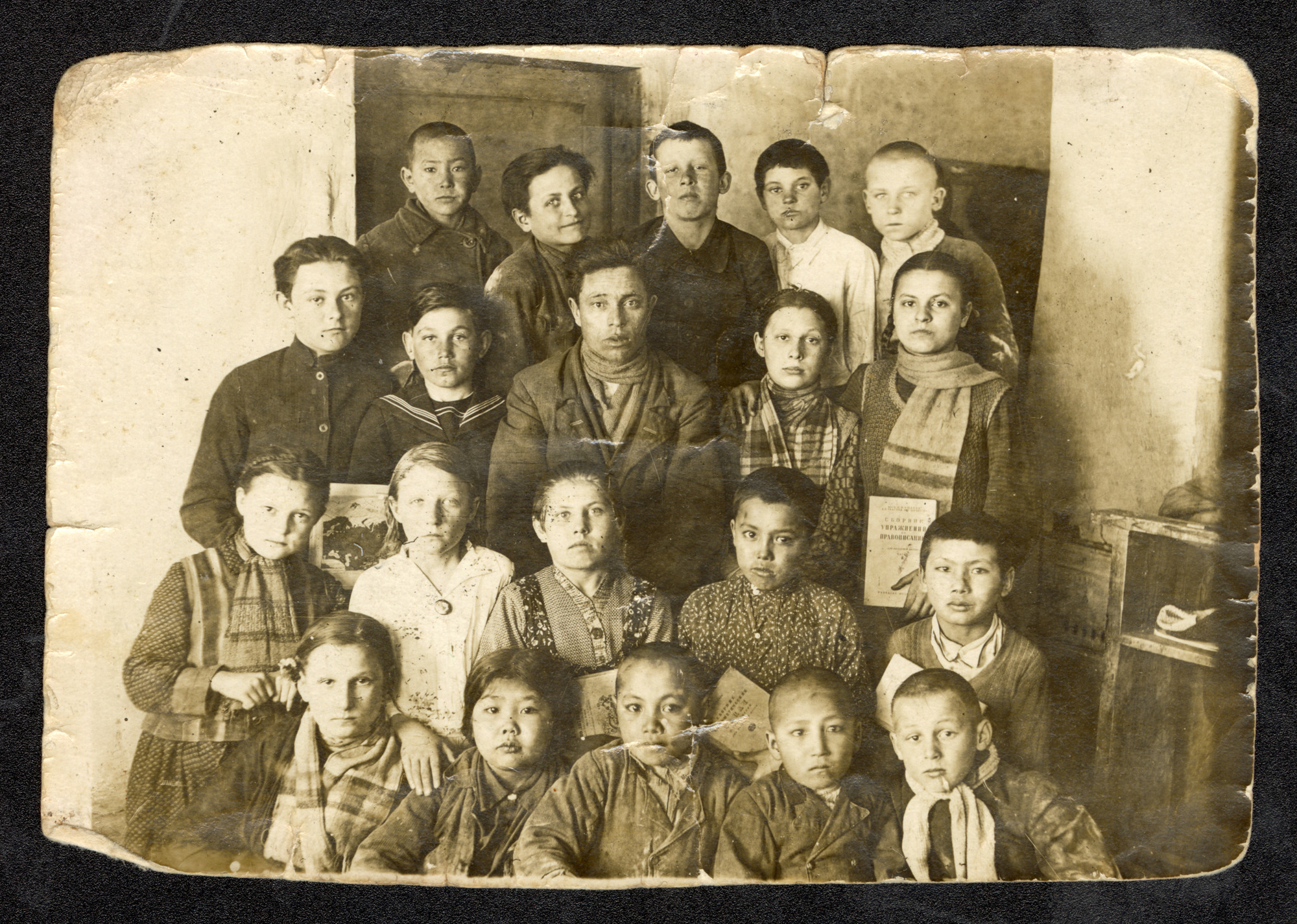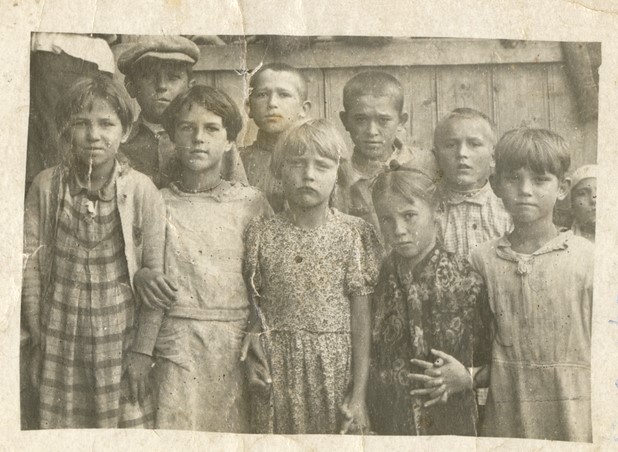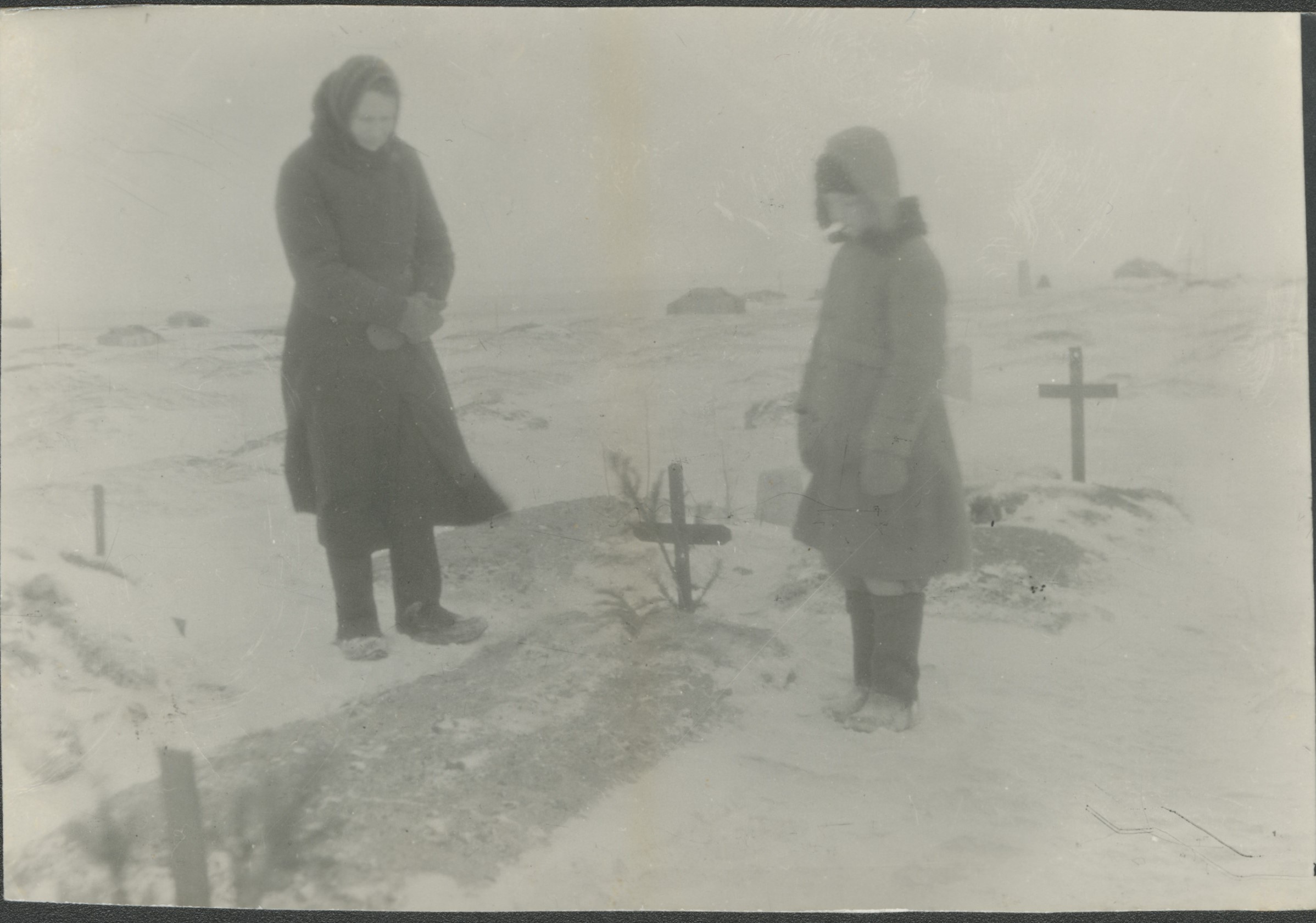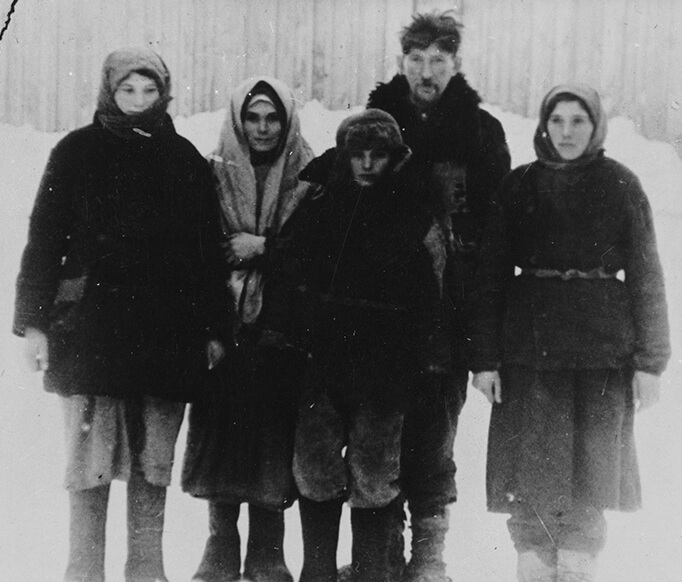
The deported



After capturing eastern territories of the Second Polish Republic in 1939, the Soviet Union began repressions of the local population. People thought to be dangerous were deported from their homes, together with their families.
Soviet authorities were desperate to subordinate the population of occupied territories as quickly as possible. Initially, social elites posed the biggest threat. Then repressions were aimed at people, who took specific actions against the occupier or were merely suspected of doing so.
One of the easiest ways to get rid of “enemies of the people” was to ship them as far away as possible. Simultaneously, they could be used as cheap labour in the new displacement location. Four great deportations were carried out in 1940 - 1941. At least 330 000 Polish citizens were sent to Siberia, Kazakhstan, and northern regions of Russia. Entire families were deported, irrespective of sex, age, and health status of all involved. Jews, Belarusians, Ukrainians, and representatives of other minorities living in the Second Polish Republic fell victim to deportations too. Many, especially children, did not survive the transport in freight wagons. Their remains were scattered in random locations.

The first great deportation of the Second World War was carried out in February 1940. Among the deportees were troops and civilians (farmers, who bought land in Kresy before the war) together with their families, as well as members of the forest service. Over 140 000 people have been deported, mainly of Polish nationality. People were shocked by the exile and, also because of the short notice, were unable to adequately prepare for the dramatic journey ahead. Many deported people without warm clothes and shoes, despite temperature falling as low as -30 degrees Celsius.
The second deportation was carried out in April 1940. This time it included families of the detained and prisoners of war, including victims of the (ongoing) Katyn Massacre. Over 60 000 people have been deported, mainly women, elderly, and children. Most people arrived in Kazakhstan, but a group of approximately 1 000 people found itself in Uzbekistan. The Soviets promised that people will be reunited with their close ones in the destination, whereas in reality these close ones were being murdered by Soviets in Katyn, Kharkiv, Twera and other places.

The Soviets carried out another, third great deportation operation, in June 1940. So called “bieżeńcy” - refugees from central and western Poland, mainly Jews, who escaped to occupied Kresy in the fear of German repressions - were transported to northern regions of the USSR. The fact that they were not local people caused that it was more difficult to control them and increased the risk of an epidemic outbreak.
Moreover, existence disastrous conditions of “bieżeńcy” resulted in their hostility towards Soviet authorities. This deportation concerned at least 90 000 people during almost a week.
The fourth deportation - which started in May and June 1941 - was carried out in several waves across particular regions. This time Soviets focused on the “socially alien element” - members of undeground organisations, wealthy farmers, tradesmen and manufacturers, former Polish civil servants, and people suspected of hostility towards the Soviet Union. They were deported together with their families, but also with criminals. Altogether, around 40 000 Polish citizens fell victim to this deportation. This operation, unlike the others, was also carried out in the occupied Baltic States and Moldova. Even the outbreak of the German-Soviet war did not put a stop to it. Some of the deported did not leave bombardment areas in time. The NKVD reported that 10-13% of the transported were killed as a result ofbombardments, and 12-15% suffered injuries.

The Siberian taiga welcomed arriving Poles with primitive, wooden barracks. In Kazakhstan the deported Poles lived with local families, often left with no choice but having to construct their own dugouts. The lack of space and poor sanitary conditions led to the widespread presence of lice and bedbugs. It also created favourable conditions for pandemics. The deported were forced to carry out work far beyond their physical capabilities, mainly clearing trees and working on farms.
Malnourishment was common. It led to exhaustion and, in extreme cases, death.
After a war between Germany and the Soviet Union broke out in June 1941, in the context of quick progress made by Wermacht, western allies saw the opportunity to add a powerful actor to the anti-German coalition. There was one issue though - one of the allies, Poland, had no diplomatic relations with the Soviets. Great Britain stepped in with a goal to change that. Thanks to help of the British, the Polish Prime Minister, general Władysław Sikorski and the USSR ambassador in London, Iwan Majski, signed an agreement restoring diplomatic relations between Poland and the USSR on July 30th, 1941 (the so-called Sikorski-Majski pact). The possibility to create a Polish army in the Soviet Union was guaranteed in one of the pact’s articles.

The Soviets also committed to announce an amnesty for Polish citizens: prisoners, captives, labourers, and exiled.
Even though news of the formal announcement of the amnesty (August 12th 1941) has not reached everyone, tens of thousands of exiled Poles left their locations of displacement and labour camps. They embarked on a journey towards locations, where the Polish army was being formed. There were several such locations in Uzbekistan: G’uzor, Kermine (currently Navoi), Marg’ilon, Shachrisabz, Vieliko Aleksiejevskaya (cyrrently Baxt), Viiewskiy (currently Olmazor), and Yangiyo’l.
General Władysław Anders took command of the newly created army. Those deported and held in captivity joined Polish Armed Forces, and saw the chance to fight their way back to their homeland. But, unfortunately, many were too weakened by malnourishment and diseases to join the battle straight away. Many perished and were buried in Uzbekistan.

tel.: +48 58 323 75 20
e-mail: sekretariat@muzeum1939.pl

tel.: + 48 85 672 36 01
e-mail: sekretariat@sybir.bialystok.pl

tel.: +998 78 120 86 51
